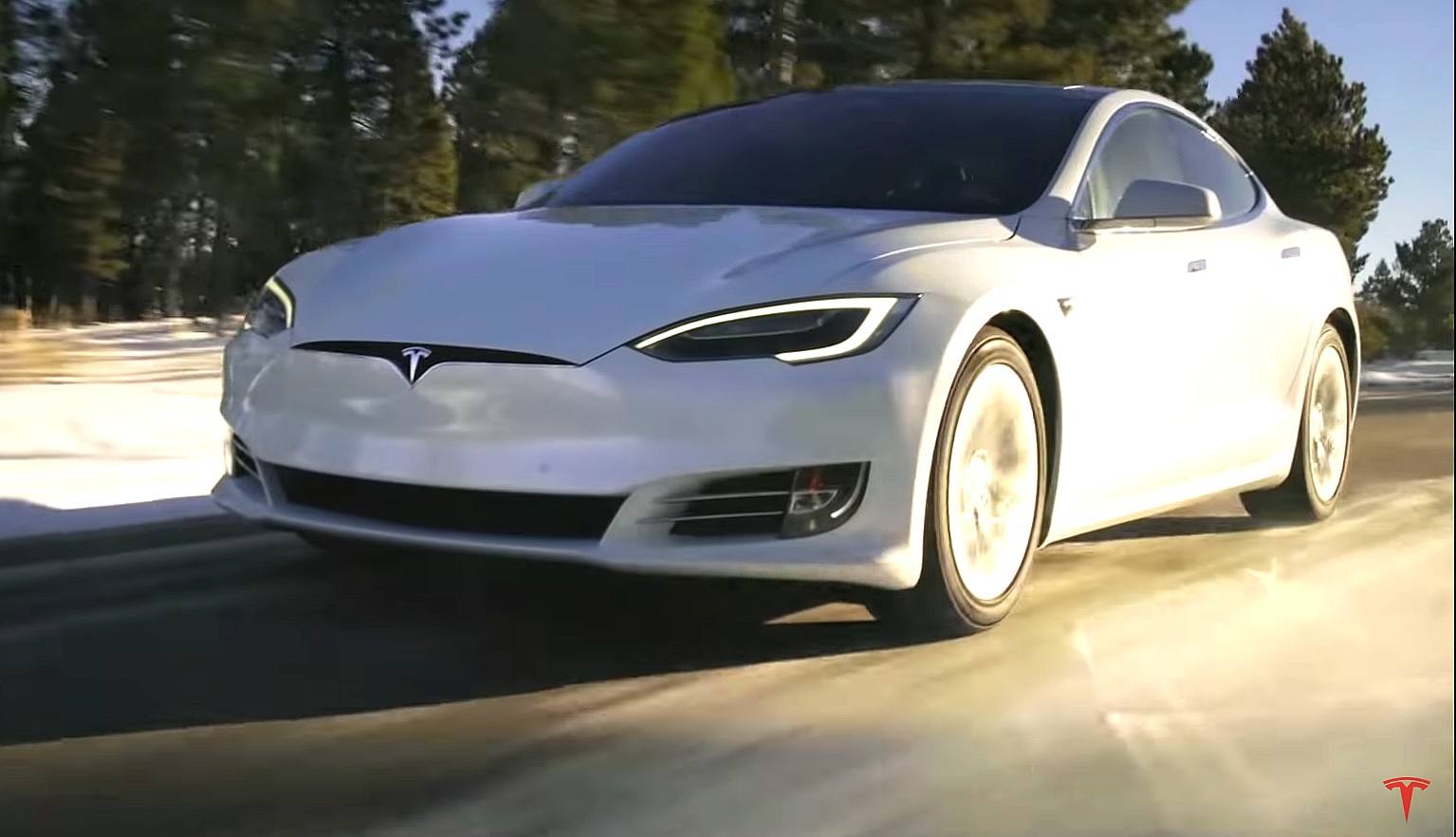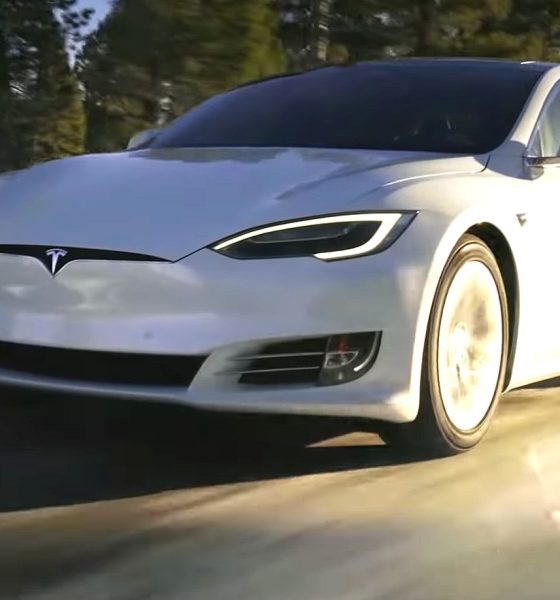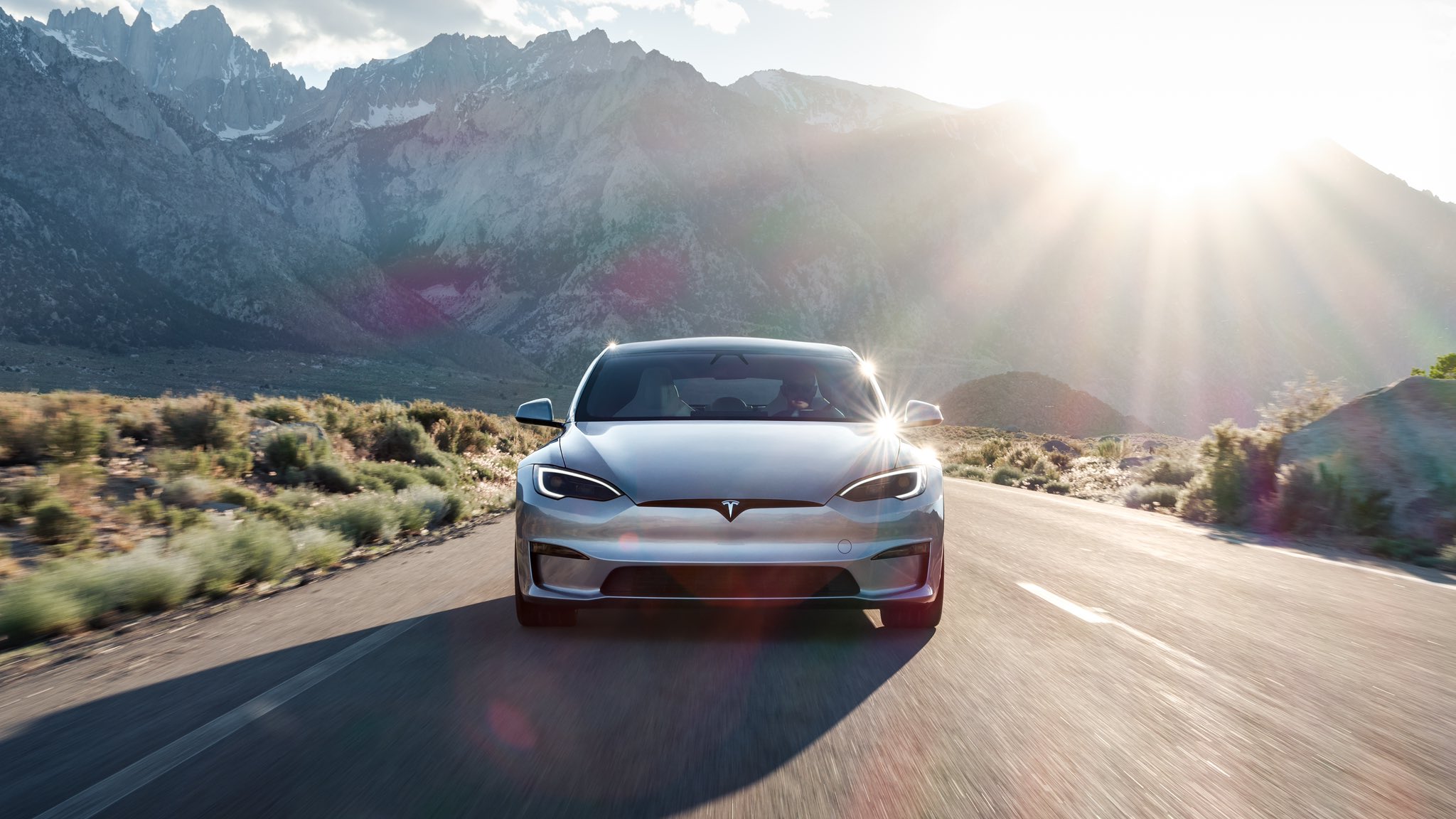

Tesla Model S
Tesla’s best advertisements are the much-hyped ‘Tesla Killers’ from veteran auto
In one of his recent excursions on Twitter, Elon Musk reaffirmed that Tesla does not advertise. While traditional car companies invest a lot in advertisements, Tesla has mostly relied on word-of-mouth and clever initiatives such as referral programs to promote its vehicles. As the auto industry shifts towards electric transportation with more and more EVs from traditional auto, it is evident that Tesla’s best advertisements can actually come from its vehicles’ rivals in the market.
Take Audi, for example. The German automaker has already released its first all-electric vehicle, the e-tron, an SUV expected to compete against the Tesla Model X. Audi has been promoting the SUV heavily, as shown in physical advertisements such as billboards and social media campaigns. Jaguar’s the same with the I-PACE, and the same is true with Porsche and the Taycan. These veteran carmakers know the auto business, and they are aware that ultimately, advertisements work. And they do.
Back in March, the I-PACE comprised almost 6% of Jaguar’s entire US sales. This is the company’s first all-electric vehicle, and it is competing in the market without a dedicated rapid charging network or the convenience of Tesla’s frequent over-the-air updates. Despite this, the I-PACE appears to be seeing a lot of interest, especially among buyers who are already committed to Jaguar’s brand. Porsche is experiencing something similar with the Taycan. The company is yet to reveal the production version of the high-performance sedan, but the number of paid reservations for the Taycan already exceed the company’s initial estimate for the vehicle’s annual production rate. Audi’s e-tron also appears to be getting a lot of interest from car owners committed to German-made vehicles too, even if the company is reportedly running into issues with the SUV’s production.
These electric cars from veteran auto, while packaged and hyped as potential “Tesla Killers” at some point, actually play a valuable part in Elon Musk’s plan to wean the world away from fossil fuels. Each I-PACE, e-tron, or Taycan that is sold is ultimately not a blow against Tesla; rather, it is a blow against vehicles equipped with the internal combustion engine. Despite this, it is still pertinent to note that even if veteran auto’s much-promoted electric vehicles are designed to take down Tesla’s entries like the Model S and Model X, it might still take some time before these companies can create a compelling EV comparable to one of Tesla’s offerings. This results in one of the most ironic twists for Tesla, as the existence and performance of rival EVs end up becoming the perfect advertisements for its electric cars.
The Audi e-tron will be yet another perfect example to illustrate this point. When the vehicle was unveiled, Audi hinted that the all-electric SUV’s range would be around 300 miles per charge, thanks to its sizable 90 kWh battery. The vehicle was only given a very conservative and almost underwhelming 204 miles of range per charge by the EPA, which is estimated to be caused by the vehicle’s poor efficiency. Ironically, range and efficiency is something that Tesla, which is still learning the challenges of mass producing vehicles, has mastered over the years, as proven by the Model S Long Range, which can travel 370 miles on a single charge. This learning curve that veteran auto is currently traversing with regards to electric vehicles is something that was felt openly by r/TeslaMotors subreddit member u/SilverTangerine5599, who recently took the Audi e-tron on a 260-mile test drive in Europe.
Similar to the Jaguar I-PACE, the Audi e-tron relies on an existing electric vehicle charging network to recharge its batteries. This became a problem during the test drive, since several public chargers that were compatible with the premium all-electric SUV proved unavailable. Ultimately, the r/TeslaMotors subreddit member noted that he ended up charging the e-tron at a 10 kW connector, which took a very long time to charge the vehicle’s batteries. This proved to be quite frustrating, since several Teslas finished recharging at a nearby Supercharger while the e-tron charged for hours at 10 kW. In a post about the experience, the electric vehicle enthusiast noted that at least for now, Tesla’s best advertisement could very well be a customer’s firsthand experience in an EV that is not a Tesla.
It should be noted that the Jaguar I-PACE and the Audi e-tron are both first-generation vehicles, and thus, are only bound to get better with time. Both carmakers already have their interior and build quality locked in from their experience in producing internal combustion vehicles. In the coming years, Jaguar, Audi, and every other large automaker going all-in on electric cars will have to master ideas that first movers like Tesla have refined over the years, such as software and efficiency.
When Tesla open-sourced its patents, Elon Musk admitted that the company could not transition the transportation sector away from the internal combustion engine on its own. For such a change to happen, other companies would have to join the movement. The arrival of the I-PACE, the e-tron, and other all-electric vehicles like the Taycan show that the electric car movement is now gaining speed.

News
Tesla shocks with latest Robotaxi testing move
Why Tesla has chosen to use a couple of Model S units must have a reason; the company is calculated in its engineering and data collection efforts, so this is definitely more than “we just felt like giving our drivers a change of scenery.”

Tesla Model S vehicles were spotted performing validation testing with LiDAR rigs in California today, a pretty big switch-up compared to what we are used to seeing on the roads.
Tesla utilizes the Model Y crossover for its Robotaxi fleet. It is adequately sized, the most popular vehicle in its lineup, and is suitable for a wide variety of applications. It provides enough luxury for a single rider, but enough room for several passengers, if needed.
However, the testing has seemingly expanded to one of Tesla’s premium flagship offerings, as the Model S was spotted with the validation equipment that is seen entirely with Model Y vehicles. We have written several articles on Robotaxi testing mules being spotted across the United States, but this is a first:
🚨 Tesla is using Model S vehicles fitted with LiDAR rigs to validate FSD and Robotaxi, differing from the Model Ys that it uses typically
Those Model Y vehicles have been on the East Coast for some time. These Model S cars were spotted in California https://t.co/CN9Bw5Wma8 pic.twitter.com/UE55hx5mdd
— TESLARATI (@Teslarati) December 11, 2025
Why Tesla has chosen to use a couple of Model S units must have a reason; the company is calculated in its engineering and data collection efforts, so this is definitely more than “we just felt like giving our drivers a change of scenery.”
It seems to hint that Tesla could add a premium, more luxury offering to its Robotaxi platform eventually. Think about it: Uber has Uber Black, Lyft has Lyft Black. These vehicles and services are associated with a more premium cost as they combine luxury models with more catered transportation options.
Tesla could be testing the waters here, and it could be thinking of adding the Model S to its fleet of ride-hailing vehicles.
Reluctant to remove the Model S from its production plans completely despite its low volume contributions to the overall mission of transitioning the world to sustainable energy, the flagship sedan has always meant something. CEO Elon Musk referred to it, along with its sibling Model X, as continuing on production lines due to “sentimental reasons.”
However, its purpose might have been expanded to justify keeping it around, and why not? It is a cozy, premium offering, and it would be great for those who want a little more luxury and are willing to pay a few extra dollars.
Of course, none of this is even close to confirmed. However, it is reasonable to speculate that the Model S could be a potential addition to the Robotaxi fleet. It’s capable of all the same things the Model Y is, but with more luxuriousness, and it could be the perfect addition to the futuristic fleet.
News
Tesla Model S makes TIME’s list of Best Inventions

Tesla’s flagship sedan, the Model S, has officially been named one of TIME Magazine’s Best Inventions of the 2000s. It joins its sibling, the Model 3, which made the list in 2017.
The Model S is among the most crucial developments in the automotive industry in the last century.
Just as the Ford Model T made its mark on passenger transportation, becoming the first combustion engine vehicle to be successfully developed and marketed at a time when horse and buggy were the preferred mode of transportation, the Model S revolutionized things a step further.
Although it was not the first EV to be developed, the Tesla Model S was the EV that put EVs on the map. In 2012, TIME recognized the Model S as a piece of technology that could truly transform the car industry.
The publication wrote:
“This electric four-door sedan has the lines of a Jaguar, the ability to zip for 265 miles (426 km) on one charge—that’s the equivalent of 89 m.p.g. (2.6 L/100 km)—and touchscreen controls for everything from GPS navigation to adjusting the suspension.”
Looking back, TIME was right on. The Tesla Model S was truly a marvel for its time, and it, along with the OG 2008 Roadster, can be seen as the first two EVs to push electrification to the mainstream.
As TIME described this year, the Model S “proved to be a game-changing experience for electric vehicles,” and it ended up truly catalyzing things for not only the industry, but Tesla as well.
The Model S acted as a fundraiser of sorts for future vehicles, just as the Model X did. They paved the way for the Model 3 and Model Y to be developed and offered by Tesla at a price point that was more acceptable and accessible to the masses.
The Current State of the Tesla Model S
The Model S contributes to a very small percentage of Tesla sales. The company groups the Model S with the Model X and Cybertruck in its quarterly releases.
Last year, that grouping sold 85,133 total units, a small percentage of the 1.789 million cars it delivered to customers in 2024.
Things looked to be changing for the Model S and the Model X this year, as Tesla teased some improvements to the two cars with a refresh. However, it was very underwhelming and only included very minor changes.
Lucid CEO shades Tesla Model S: “Nothing has changed in 12 years now”
It appeared as if Tesla was planning to sunset the two cars, and while it has not taken that stance yet, it seems more likely that the company will begin taking any potential options to heart.
CEO Elon Musk said a few years ago that the two cars were only produced due to “sentimental reasons.”
Lifestyle
Tesla Model S Plaid battles China’s 1500 hp monster Nurburgring monster, with surprising results
There is just something about Tesla’s tuning and refinement that makes raw specs seem not as game-changing.

The Tesla Model S Plaid has been around for some time. Today, it is no longer the world’s quickest four-door electric sedan, nor is it the most powerful. As per a recent video from motoring YouTube channel Carwow, however, it seems like the Model S Plaid is still more than a match for some of its newer and more powerful rivals.
The monster from China
The Xiaomi SU7 Ultra is nothing short of a monster. Just like the Model S Plaid, it features three motors. It also has 1,548 hp and 1,770 Nm of torque. It’s All Wheel Drive and weighs a hefty 2,360 kg. The vehicle, which costs just about the equivalent of £55,000, has been recorded setting an insane 7:04.957 at the Nurburgring, surpassing the previous record held by the Porsche Taycan Turbo GT.
For all intents and purposes, the Model S Plaid looked outgunned in Carwow’s test. The Model S Plaid is no slouch with its three motors that produce 1,020 hp and 1,420 Nm of torque. It’s also a bit lighter at 2,190 kg despite its larger size. However, as the Carwow host pointed out, the Model S Plaid holds a 7:25.231 record in the Nurburgring. Compared to the Xiaomi SU7 Ultra’s record, the Model S Plaid’s lap time is notably slower.
Real-world tests
As could be seen in Carwow’s drag races, however, Tesla’s tech wizardry with the Model S Plaid is still hard to beat. The two vehicles competed in nine races, and the older Model S Plaid actually beat its newer, more powerful counterpart from China several times. At one point in the race, the Xiaomi SU7 Ultra hit its power limit due to its battery’s temperature, but the Model S Plaid was still going strong.
The Model S Plaid was first teased five years ago, in September 2020 during Tesla’s Battery Day. Since then, cars like the Lucid Air Sapphire and the Xiaomi SU7 Ultra have been released, surpassing its specs. But just like the Model Y ended up being the better all-rounder compared to the BYD Sealion 7 and the MG IM6, there is just something about Tesla’s tuning and refinement that makes raw specs seem not as game-changing.
Check out Carwow’s Model S Plaid vs Xiaomi SU7 drag race video below.








